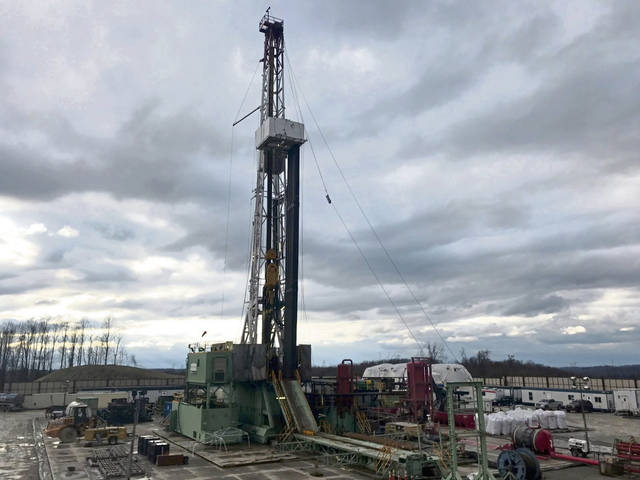Colin McNickle: Shale gas impact fee receipts down; future take a wild card
It was a challenging 2019 for a shale gas industry beset with a glut of product that kept prices low and aging wells as the impact fee distribution numbers for 2020 attest, shows an analysis by the Allegheny Institute for Public Policy.
And while those prices remain a wild card — as do the effects of this year’s coronavirus pandemic — on 2021’s distributions, the ever-present threat of increased regulations cannot be taken lightly.
“Indeed, the state government must avoid any temptation to over-tax the gas industry that is providing so much to (Pennsylvania’s) economy currently and to its potential for future growth,” say Elizabeth Miller, a research associate, and Frank Gamrat, executive director.
Just think of this month’s 150% increase (from $5,000 to $12,500) for the cost of a state permit to drill a shale gas well that was imposed by the state Department of Environmental Protection.
The Pennsylvania shale gas impact fee is a tax imposed on unconventional natural gas wells from which gas is accessed through hydraulic fracturing (fracking).
Its receipts are distributed to, in part, compensate local governments for the degradation of infrastructure stemming from natural gas extraction and its related activities. The fee is based on the average annual trading price of natural gas and the age of the well.
From 2011 to 2019, $1.9 billion in impact fee revenue has been distributed to local governments throughout the state.
But that revenue dropped by more than 17.5% in 2019 over 2018’s record high — from $242.6 million to $200 million. That has reduced what eligible jurisdictions received this year.
Statewide, Washington County received the most revenue from the impact fee. But the $6.6 million in 2019 represents a 21% drop from 2018.
In the rest of the seven- county Pittsburgh Metropolitan Statistical Area (MSA), Allegheny County’s take was $1.5 million, down 17%; Armstrong County’s $520,478 was down 15%; Beaver County’s $634,058 was lower by 13%; Butler County’s $2.1 million was 31% lower; Fayette County, at $1 million, fell by 13%; and Westmoreland County’s $1.1 million was off by 27%.
A bright spot in last year’s statistics — at least for impact fee revenue generation — can be found in the number of additional wells to which the tax was applied.
“Statewide, the number of impact fee-eligible wells increased by 595, going from 9,560 in 2018 to 10,155 in 2019,” Miller and Gamrat say.
It’s difficult to forecast what might happen in 2020 for 2021 receipts, given the higher well permit fee and the coronavirus pandemic. But it could be considered a safe bet prices will remain depressed, and the higher fee will be a disincentive to drill new wells.
“The impact fee distributions are beneficial to local governments, and this year they will be especially welcomed as an infusion for the government coffers hit by lower tax revenue due to the coronavirus’ impact,” Miller and Gamrat remind.
“It is important to emphasize that the economic impact of this industry goes far beyond the payment of the impact fee,” they add. “It has added direct jobs at the drilling companies themselves as well as jobs created at industries providing support and equipment to the drillers.”
How troubling it is that in the middle of the coronavirus pandemic, the state has chosen to again attempt to kill the proverbial goose that lays the golden egg.
Colin McNickle is communications and marketing director at the Allegheny Institute for Public Policy and can be reached via email.
Remove the ads from your TribLIVE reading experience but still support the journalists who create the content with TribLIVE Ad-Free.

